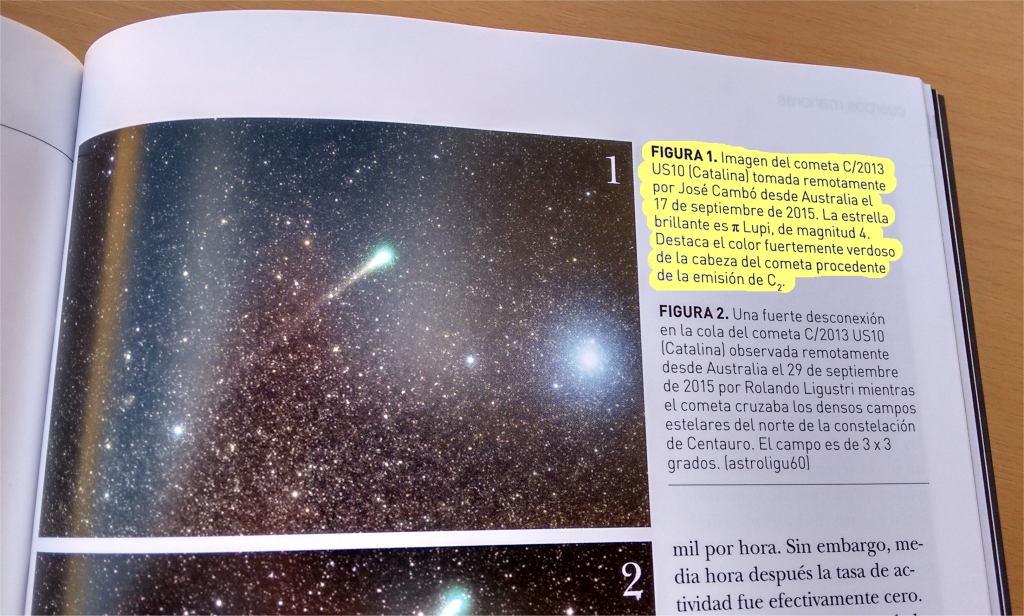
Takahashi FSQ-106ED & SBIG STL-1100M (L:3×180 + RGB:1x120)
El cometa C/2013 US10 (Catalina) fotografiado el 17 de Septiembre de 2015, con magnitud 6.5 ya es observable con prismáticos desde el Hemisferio Sur. En esta fotografía de gran campo el cometa se encuentra cerca de la brillante estrella Alpha Lupi de magnitud 2.3 en la constelación del Lobo. La coma presenta una fuerte emisión verdosa de C2, mientras que su cola de polvo se proyecta hacia el sureste con una longitud de más de 1.5 grados, que termina confundiendose dentro de la Vía Láctea que ocupa la parte inferior de la imagen.
Comet C/2013 US10 (Catalina) imaged on September 17th 2015, with magnitude 6.5 is now observable using binoculars from the South Hemisphere. In this wide field photography the comet is located near the bright star Alpha Lupi into constellation of the Wolf. The coma shows a strong greenish emission of C2, meanwhile its dust tail is projected toward southeast with a longitude of more than 1.5 degrees, that ends confusing inside the Milky Way which fills the bottom of image.
* Publicada en la edición de Noviembre de 2015 de la revista AstronomiA Magazine:










